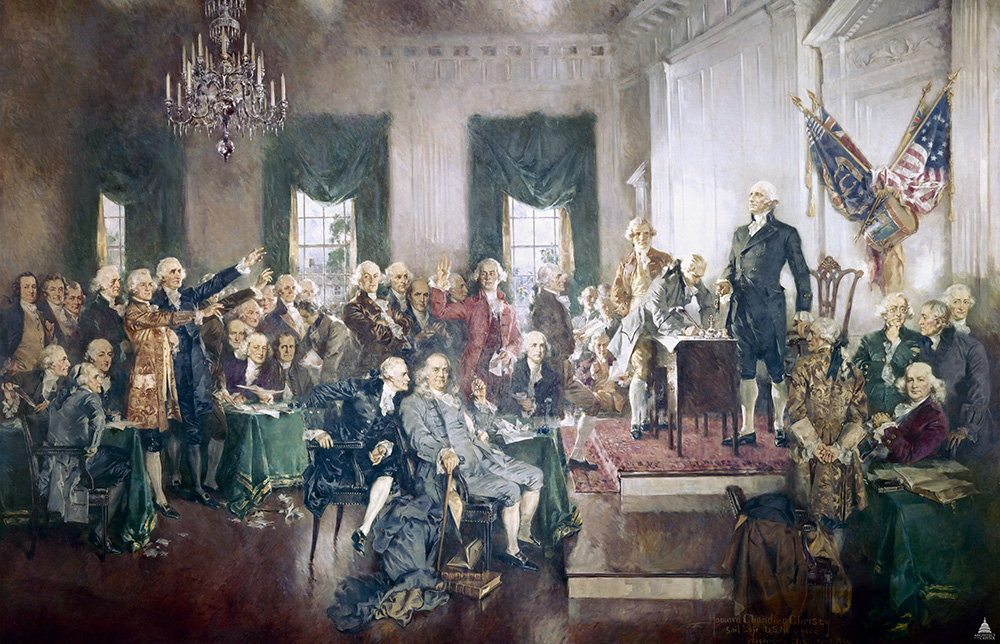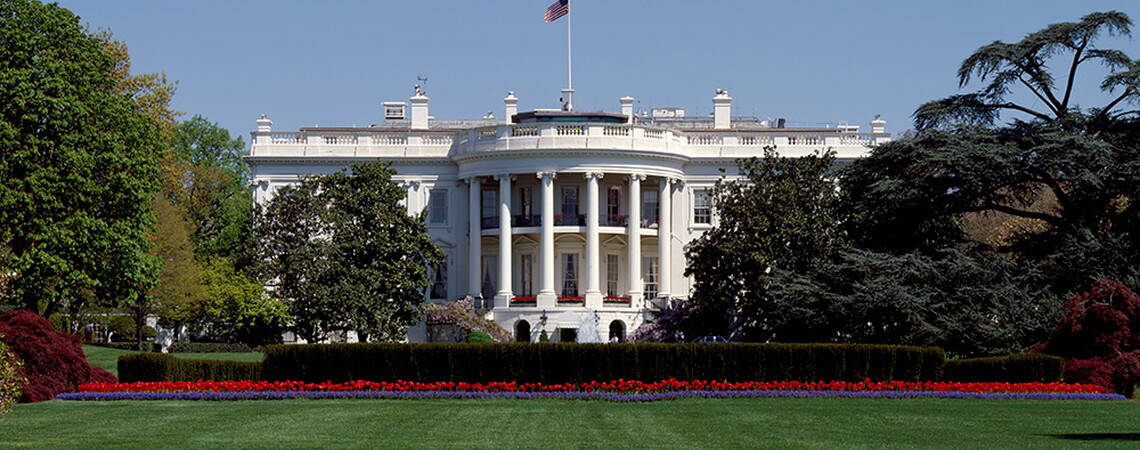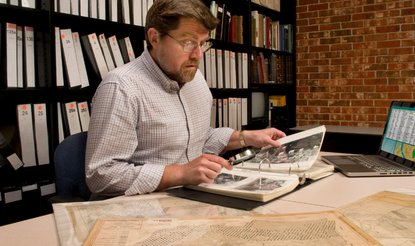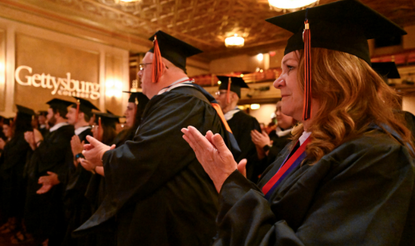The "Excellent" Electoral College
by Tara Ross
 “If the Electoral College isn’t on the endangered species list, it should be,” Ronald Reagan once joked. “At least it should be declared a game bird and given a few months a year when it couldn’t be shot at.”[1]
“If the Electoral College isn’t on the endangered species list, it should be,” Ronald Reagan once joked. “At least it should be declared a game bird and given a few months a year when it couldn’t be shot at.”[1]
If he could see what is happening today, he would surely double down on the sentiment.
The Electoral College is badly misunderstood—and thus routinely panned. It has been called “broken,” “obsolete,” and a “shadow of slavery’s power.” The criticisms are repeated so often that they threaten to become conventional wisdom, but nothing could be further from the truth. What was the real reason the Founders created the Electoral College? Fallible human nature.
“If men were angels, no government would be necessary,” James Madison famously wrote.[2] Flawed human beings can’t be completely trusted, as the Founders knew. Power corrupts. People get carried away by ambition or greed. Too often, bare or emotional majorities tyrannize minority groups. Given the opportunity, two wolves will vote to eat the sheep.
“Democracy never lasts long,” President John Adams concluded. “It soon wastes, exhausts, and murders itself. There never was a democracy yet that did not commit suicide.”[3]
The Founders’ distrust of simple democracy is sometimes twisted into a claim that they were elitists who didn’t trust the people. The allegation misunderstands the point: The Founders didn’t just mistrust the people—they mistrusted everyone. Their distrust of the people sat alongside their distrust of elected officials. They distrusted every branch of the government: executive, legislative, judicial, state, and national.
Indeed, delegates to the Constitutional Convention did not even seem to know if they, personally, could withstand power’s allure. They sat in Independence Hall, “the most likely candidates for the Senate and the presidency,” as historian Carol Berkin observes, and debated checks and balances to place upon themselves.[4]
The Founders’ pragmatism about human nature was enhanced by their study of history, including their own recent history. Americans had fought against “taxation without representation,” wanting self-governance so badly that they had fought, bled, and died for it—but there was more to American history than simply that. Delegates understood that even a seat in the British Parliament would not have protected the American colonies. Instead, the colonists would have been a minority interest, outvoted time and time again by the majority of citizens in Great Britain.
Convention delegates, then, faced two seemingly irreconcilable goals: How can a country be self-governing, even as it avoids the dangers of simple democracies? How can it protect minority political interests from the tyranny of the majority?
They solved their problem by creating a Constitution with a unique blend of governmental features: democracy (self-governance), republicanism (deliberation and compromise), and federalism (power divided between state and national governments). American government is divided into three co-equal branches: executive, judicial, and legislative. Supermajorities are required to do certain things, such as amend the Constitution, override a presidential veto, or ratify a treaty.
The Electoral College is part of this system of checks and balances, enabling Americans to be self-governing even as mob rule and majority tyranny are avoided.
 Modern critics claim that the Electoral College is “outdated,” but that is impossible: People are just as fallible today as they were in 1787. Constitutional safeguards are still needed to protect liberty from the worst impulses of human nature.
Modern critics claim that the Electoral College is “outdated,” but that is impossible: People are just as fallible today as they were in 1787. Constitutional safeguards are still needed to protect liberty from the worst impulses of human nature.
Today, the Electoral College operates as a two-step process. The first phase occurs on Election Day in November. Importantly for our democratic-minded citizenry, this first step is entirely democratic. We hold fifty-one purely democratic elections every presidential election year: one in each state and one in DC.
In this November vote, citizens head to the polls and cast their ballots in one-person, one-vote statewide elections. They are voting for presidential electors who will represent their states in phase two of the election.
In 2024, for example, most voters in California cast a ballot for Kamala Harris. This was a straightforward, democratic vote. Democrats won, so the State of California appointed 54 presidential electors who were Democrats. If Donald Trump had won, 54 Republicans would have been appointed instead.
Part two of the election occurs in December, and it is an election among the presidential electors who were elected in November. The balloting in December—not the November election—is the official election for president. It takes a majority of states’ electors (currently 270) to win the White House.
The two-phase election provides many benefits that get taken for granted.
First, the system encourages coalition-building. Historically speaking, candidates fail when they focus too exclusively on regional majorities or special interest groups. Grover Cleveland suffered a loss in 1888 because he was too heavily reliant on six southern states. Likewise, Hillary Clinton’s 2016 campaign was disproportionately skewed toward New York and California.
The Electoral College requires something better: Candidates must reach out to a wide variety of voters because the White House cannot be won unless a candidate can win simultaneous victories in many states across the nation.
If the Electoral College encourages coalition-building, then why have recent elections been so divisive?
We’ve been here before. We’ve been divided and angry. We’ve had back-to-back elections in which the vote was close—too close—and the electoral vote didn’t always match the popular vote outcome.
Notably, elections in the late 1800s demonstrated these very features. At the time, Democratic strength lay in the South, but those safe states did not hold enough electoral votes to win. Democrats would need to earn votes outside of their safe areas. In the meantime, Republicans were in the opposite situation: Their northern safe states were enough to win the White House—but just barely. They could not afford to lose even one state. Thus, both sides of the political aisle had incentives to reach out to voters outside of their “safe” block.
The parties were forced into coalition-building, although the change admittedly took a few election cycles. (Humans can be stubborn!) The rift did close, though. By the early 1900s, Calvin Coolidge and Franklin Roosevelt were winning in landslides. Today’s situation is the same. The first party to understand the lessons of history will start winning in landslides.
The Electoral College provides another benefit that often goes unnoticed: It isolates voting problems to one or a handful of states, making any voting problems easier to resolve. The decentralized process also complicates efforts to steal an election.
Without the Electoral College, any vote stolen in any part of the country can change the national outcome, even if that vote is easily stolen in the bluest California precinct or the reddest Texas one. By contrast, with the Electoral College, bad actors must know when and where to steal a vote. It’s typically hard to predict where stolen votes will matter, but if one person can predict it, so can many people. That state will be closely watched.
As a matter of history, the Electoral College has demonstrated its exceptional ability to control chaos on at least four occasions. In 1960, election disputes would have been isolated to Texas and Illinois, had Richard Nixon chosen to contest the questionable results there. In 2000, the country was able to focus on a finite number of problems in a single state: Florida. In 1876, problems were isolated to four states. Finally, problems in 2020 were isolated to states such as Michigan, Pennsylvania, and Wisconsin.
The Electoral College has served Americans well for nearly 250 years, and it should be kept, despite the bashing it takes once every four years. “If the manner of it be not perfect,” as Alexander Hamilton once wrote, “it is at least excellent.”[5]
Tara Ross is a legal scholar and the former editor-in-chief of the Texas Review of Law & Politics. She is the author of several books, including Why We Need the Electoral College (Regnery Gateway, 2019), The Indispensable Electoral College: How the Founders’ Plan Saves Our Country from Mob Rule (Regnery Gateway, 2017), and Enlightened Democracy: The Case for the Electoral College (Colonial Press, 2d ed., 2012).
[1] Ronald Reagan, comments on the Electoral College, April 13, 1977, in Reagan in His Own Hand: The Writings of Ronald Reagan That Reveal His Revolutionary Vision for America, ed. Kiron K. Skinner, Annelise Anderson, and Martin Anderson (New York: Simon & Schuster, 2002), p. 242.
[2] James Madison, The Federalist, No. 51, in The [New York] Independent Journal: or, the General Advertiser, February 6, 1788, repr. Founders Online, National Archives, https://founders.archives.gov/documents/Hamilton/01-04-02-0199.
[3] John Adams to John Taylor, December 17, 1814, Founders Online, National Archives, https://founders.archives.gov/documents/Adams/99-02-02-6371.
[4] Carol Berkin, A Brilliant Solution: Inventing the American Constitution (New York: Harcourt, Inc., 2002), p. 143.
[5] Alexander Hamilton, The Federalist, No. 68, in The [New York] Independent Journal: or, the General Advertiser, March 12, 1788, repr. Founders Online, National Archives, https://founders.archives.gov/documents/Hamilton/01-04-02-0218.



